 |
Recommended Books:Set of Integers, SYMBOLIC REPRESENTATION |
| Truth Tables for:DE MORGAN’S LAWS, TAUTOLOGY >> |
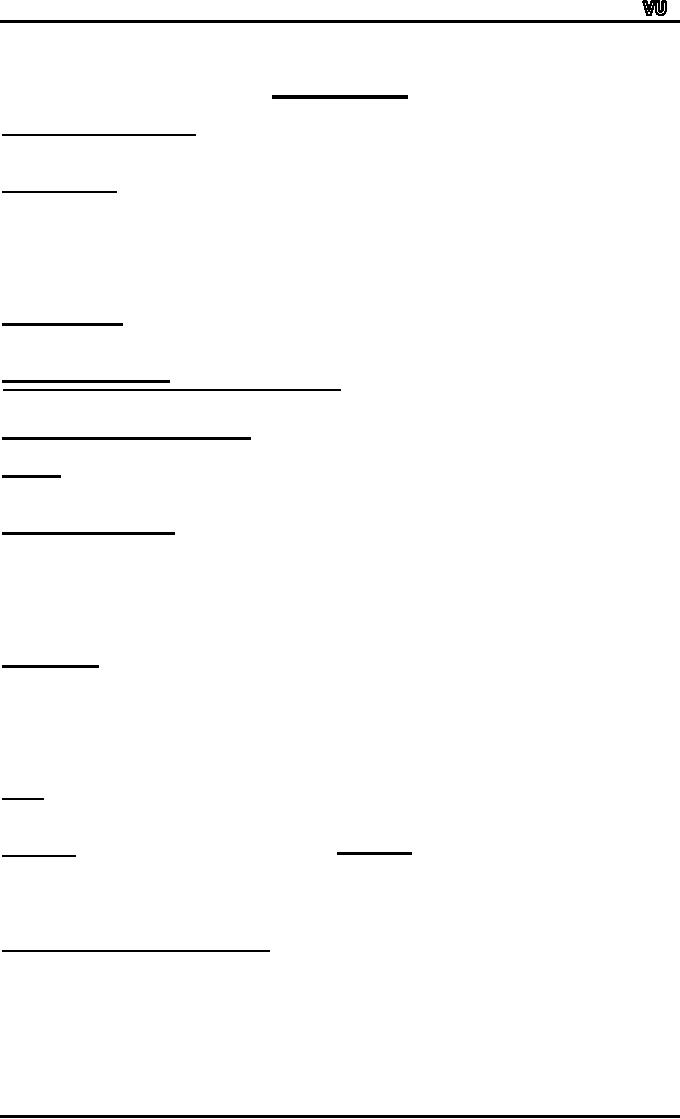
MTH001
Elementary Mathematics
LECTURE #
1
1.Recommended
Books:
1.Discrete
Mathematics with Applications
(second edition) by Susanna S.
Epp
MAIN
TOPICS:
1.
Logic
2.
Sets & Operations on
sets
3.
Relations & Their
Properties
4.
Functions
5.
Sequences & Series
Set
of Integers:
�
�
�
�
�
�
3
-2
-1
0
1
2
Set
of Real Numbers:
�
�
�
�
�
�
�
-3
-2
-1
0
1
2
What
is Discrete Mathematics?:
Discrete
Mathematics concerns
processes that consist of a
sequence of individual
steps.
LOGIC:
Logic
is the study of the
principles and methods that
distinguishes between a
valid
and an invalid
argument.
SIMPLE
STATEMENT:
A
statement is a declarative sentence
that is either true or false
but not both.
A
statement is also referred to as a
proposition
Example:
2+2 = 4, It is Sunday
today
If
a proposition is true, we say
that it has a truth
value of "true".
If
a proposition is false, its
truth
value is "false".
The
truth values "true"
and
"false"
are,
respectively, denoted by the
letters T
and
F.
EXAMPLES:
Not
Propisitions
1.Grass
is green.
�
Close
the door.
2.4
+ 2 = 6
2.4
+ 2 = 7
�
x
is greater
than 2.
3.There
are four fingers in a
hand.
�
He
is very rich
are
propositions
are
not propositions.
Rule:
If
the sentence is preceded by
other sentences that make
the pronoun or variable
reference
clear,
then the sentence is a
statement.
Example
Example:
Bill
Gates is an American
x=1
He
is very rich
x>2
He
is very rich is a statement
with truth-value
x
> 2 is a
statement with
truth-value
TRUE.
FALSE.
UNDERSTANDING
STATEMENTS:
1.x
+ 2 is
positive.
Not
a statement
2.May
I come in?
Not
a statement
3.Logic
is interesting.
A
statement
4.It
is hot today.
A
statement
5.-1
> 0
A
statement
6.x
+ y = 12
Not
a statement
Page
1
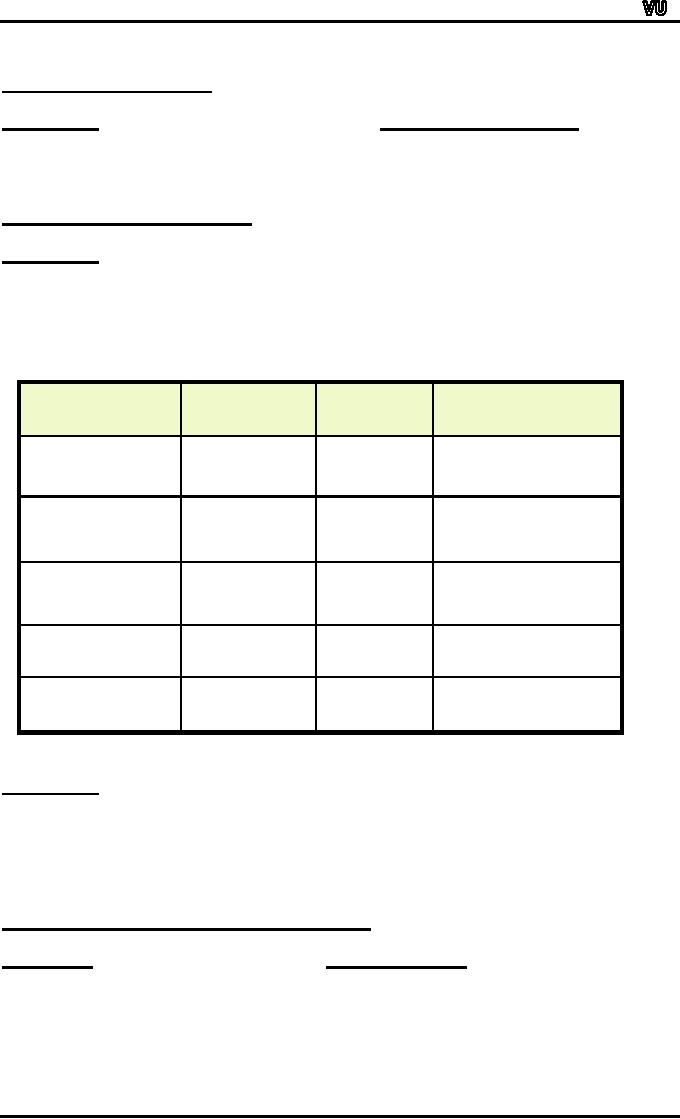
MTH001
Elementary Mathematics
COMPOUND
STATEMENT:
Simple
statements could be used to
build a compound
statement.
EXAMPLES:
LOGICAL
CONNECTIVES
1.
"3 + 2 = 5"
and
"Lahore is a
city in Pakistan"
2.
"The
grass is green" or " It is hot
today"
3.
"Discrete
Mathematics is not
difficult to
me"
AND,
OR, NOT are called
LOGICAL CONNECTIVES.
SYMBOLIC
REPRESENTATION:
Statements
are symbolically represented by
letters such as p,
q, r,...
EXAMPLES:
p
=
"Islamabad is
the capital of
Pakistan"
q
=
"17 is
divisible by 3"
CONNECTIVE
MEANINGS
SYMBOL
CALLED
Negation
not
~
Tilde
∧
Conjunction
and
Hat
∨
Disjunction
or
Vel
→
Conditional
if...then...
Arrow
↔
Biconditional
if
and only if
Double
arrow
EXAMPLES:
p
=
"Islamabad is
the capital of
Pakistan"
q
=
"17 is
divisible by 3"
p
∧
q
=
"Islamabad is
the capital of Pakistan and
17 is divisible by 3"
p
∨
q
=
"Islamabad is
the capital of Pakistan or 17 is
divisible by 3"
~p = "It is
not the case that
Islamabad is the capital of
Pakistan" or simply
"Islamabad
is not the capital of
Pakistan"
TRANSLATING
FROM ENGLISH TO
SYMBOLS:
Let
p = "It is hot", and q = " It is
sunny"
SENTENCE
SYMBOLIC
FORM
1.It
is not
hot.
~p
p
∧q
2.It
is hot and
sunny.
p∨q
3.It
is hot or
sunny.
~
p ∧q
4.It
is not
hot
but
sunny.
~p∧~q
5.It
is neither
hot
nor
sunny.
Page
2
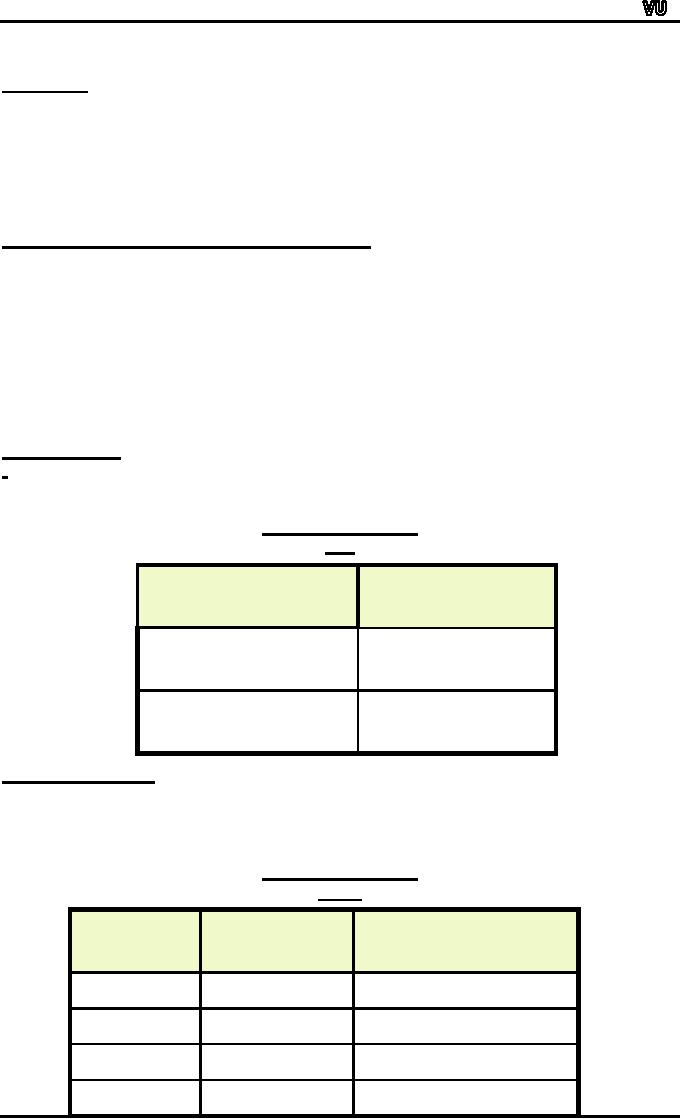
MTH001
Elementary Mathematics
EXAMPLE:
Let
h
= "Zia is
healthy"
w
= "Zia is
wealthy"
s
= "Zia is
wise"
Translate
the compound statements to
symbolic form:
(h
∧
w) ∧ (~s)
1.Zia
is healthy and wealthy but
not wise.
~w
∧
(h ∧ s)
2.Zia
is not wealthy but he is
healthy and wise.
~h
∧
~w ∧ ~s
3.Zia
is neither healthy, wealthy
nor wise.
TRANSLATING
FROM SYMBOLS TO
ENGLISH:
Let
m
= "Ali is good in
Mathematics"
c
= "Ali is a Computer Science
student"
Translate
the following statement
forms into plain
English:
1.~
c
Ali
is not a Computer Science
student
2.c
∨
m
Ali
is a Computer Science student or
good in Maths.
3.m
∧
~c
Ali
is good in Maths but not a
Computer Science
student
A
convenient method for
analyzing a compound statement is to
make a truth
table
for it.
A
truth
table specifies
the truth value of a
compound proposition for
all
possible
truth values of its
constituent propositions.
NEGATION
(~):
If
p
is a statement
variable, then negation of
p,
"not p",
is denoted as "~p"
It
has opposite truth value
from p i.e.,
if
p is true, ~p is false; if p is false, ~p
is true.
TRUTH
TABLE FOR
~p
p
~p
T
F
F
T
CONJUNCTION
(∧):
If
p
and
q
are
statements, then the
conjunction of p
and
q
is
"p
and q", denoted
as
"p
∧
q".
It
is true when, and only
when, both p and q are
true. If either p or q is false,
or
if
both are false, p∧q is
false.
TRUTH
TABLE FOR
p∧q
p∧q
p
q
T
T
T
T
F
F
F
T
F
F
F
F
Page
3
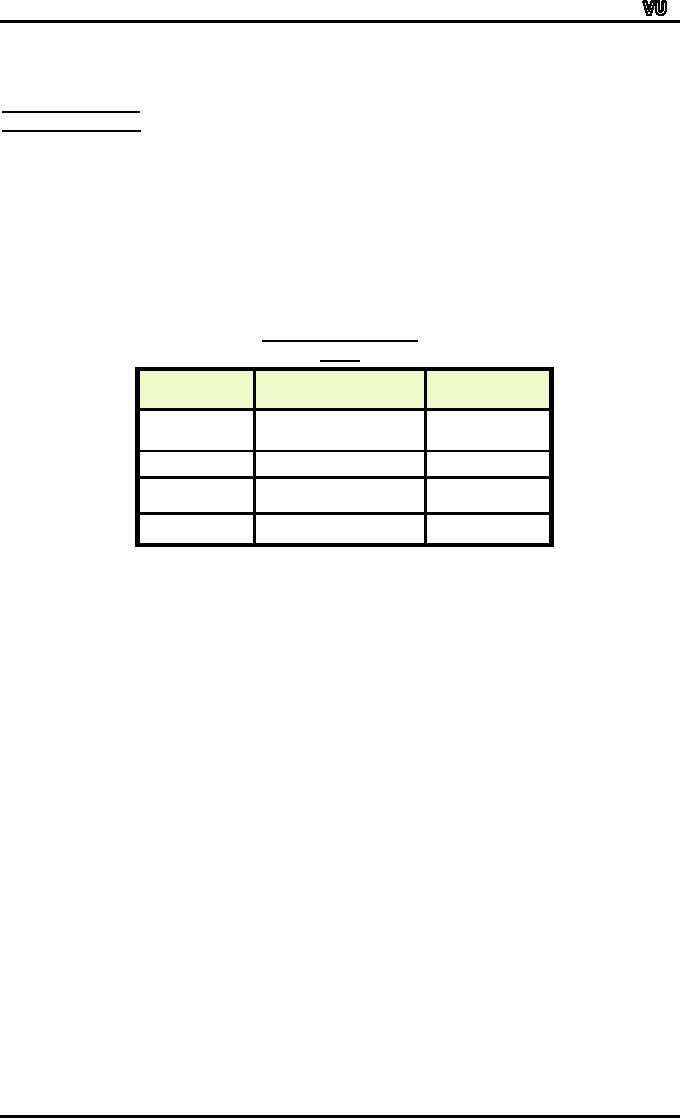
MTH001
Elementary Mathematics
DISJUNCTION
(∨)
or
INCLUSIVE OR
If
p
&
q
are
statements, then the
disjunction of p
and
q
is
"p
or q", denoted
as
"p
∨
q".It is true
when at least one of p or q is
true and is false only
when both
p
and q are false.
TRUTH
TABLE FOR
p∨q
p∨q
p
q
T
T
T
T
F
T
F
T
T
F
F
F
Page
4
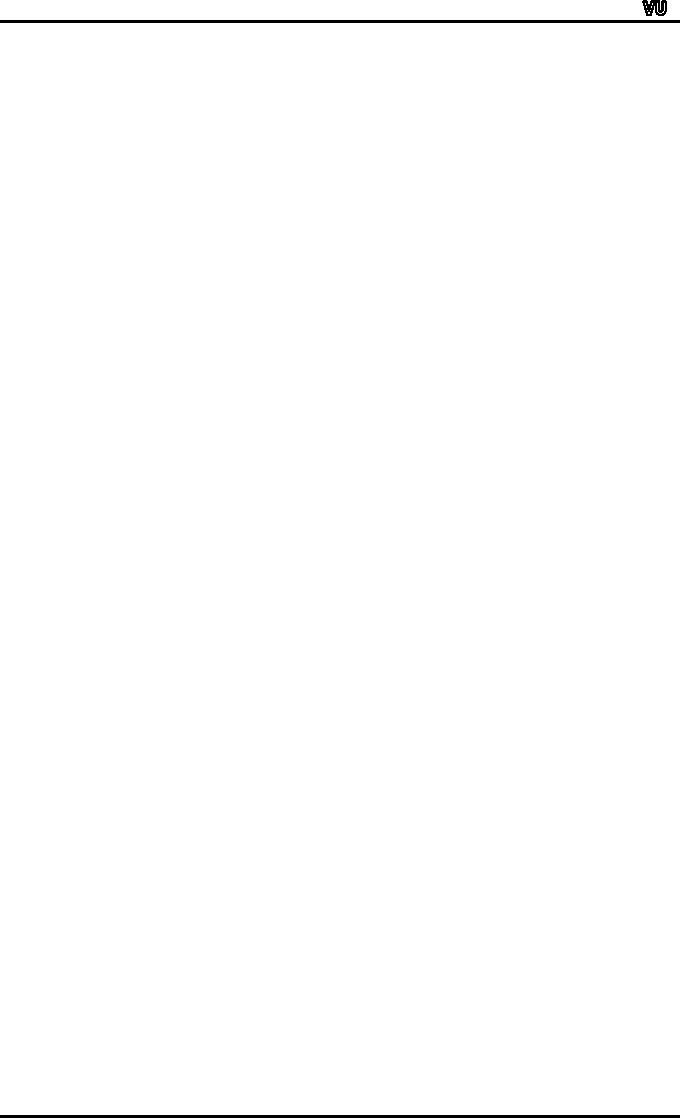
MTH001
Elementary Mathematics
Note
that in
the table T is only in that
row where both p and q
have T
and
all other values are F.
Thus for finding out
the truth values for
the conjunction of
two
statements
we will only first search
out where the
both
statements are true and
write down the T in the
corresponding row
in
the column of p ∧
q
and in all other rows we
will write F in the
column
of p ∧
q.
DISJUNCTION
(∨) or INCLUSIVE
OR
If
p
and
q
are
statements, then the
disjunction of p
and
q
is
"p
or q", denoted
as "p
∨
q"
It
is true when at least one of
p or q is true and is false
only when both p and q
are false.
Note
that in
the table F is only in that
row where both p and q
have F and all other
values
are
T. Thus for finding out
the truth values for
the disjunction of two
statements we will
only
first
search out where the
both statements are false
and write down the F in
the
corresponding
row in the column of p ∨
q
and in all other rows we
will write T in the
column
of
p ∨
q.
Remark:
Note
that for Conjunction of two
statements we find the T in
both the
statements,
But in disjunction we find F in
both the statements. In
other words we
will
fill
T first in the column of
conjunction and F in the
column of disjunction.
SUMMARY
1.
What is a statement?
2.
How a compound statement is
formed.
3.
Logical connectives (negation,
conjunction, disjunction).
4.
How to construct a truth
table for a statement
form.
Page
5
Table of Contents:
- Recommended Books:Set of Integers, SYMBOLIC REPRESENTATION
- Truth Tables for:DE MORGAN’S LAWS, TAUTOLOGY
- APPLYING LAWS OF LOGIC:TRANSLATING ENGLISH SENTENCES TO SYMBOLS
- BICONDITIONAL:LOGICAL EQUIVALENCE INVOLVING BICONDITIONAL
- BICONDITIONAL:ARGUMENT, VALID AND INVALID ARGUMENT
- BICONDITIONAL:TABULAR FORM, SUBSET, EQUAL SETS
- BICONDITIONAL:UNION, VENN DIAGRAM FOR UNION
- ORDERED PAIR:BINARY RELATION, BINARY RELATION
- REFLEXIVE RELATION:SYMMETRIC RELATION, TRANSITIVE RELATION
- REFLEXIVE RELATION:IRREFLEXIVE RELATION, ANTISYMMETRIC RELATION
- RELATIONS AND FUNCTIONS:FUNCTIONS AND NONFUNCTIONS
- INJECTIVE FUNCTION or ONE-TO-ONE FUNCTION:FUNCTION NOT ONTO
- SEQUENCE:ARITHMETIC SEQUENCE, GEOMETRIC SEQUENCE:
- SERIES:SUMMATION NOTATION, COMPUTING SUMMATIONS:
- Applications of Basic Mathematics Part 1:BASIC ARITHMETIC OPERATIONS
- Applications of Basic Mathematics Part 4:PERCENTAGE CHANGE
- Applications of Basic Mathematics Part 5:DECREASE IN RATE
- Applications of Basic Mathematics:NOTATIONS, ACCUMULATED VALUE
- Matrix and its dimension Types of matrix:TYPICAL APPLICATIONS
- MATRICES:Matrix Representation, ADDITION AND SUBTRACTION OF MATRICES
- RATIO AND PROPORTION MERCHANDISING:Punch recipe, PROPORTION
- WHAT IS STATISTICS?:CHARACTERISTICS OF THE SCIENCE OF STATISTICS
- WHAT IS STATISTICS?:COMPONENT BAR CHAR, MULTIPLE BAR CHART
- WHAT IS STATISTICS?:DESIRABLE PROPERTIES OF THE MODE, THE ARITHMETIC MEAN
- Median in Case of a Frequency Distribution of a Continuous Variable
- GEOMETRIC MEAN:HARMONIC MEAN, MID-QUARTILE RANGE
- GEOMETRIC MEAN:Number of Pupils, QUARTILE DEVIATION:
- GEOMETRIC MEAN:MEAN DEVIATION FOR GROUPED DATA
- COUNTING RULES:RULE OF PERMUTATION, RULE OF COMBINATION
- Definitions of Probability:MUTUALLY EXCLUSIVE EVENTS, Venn Diagram
- THE RELATIVE FREQUENCY DEFINITION OF PROBABILITY:ADDITION LAW
- THE RELATIVE FREQUENCY DEFINITION OF PROBABILITY:INDEPENDENT EVENTS